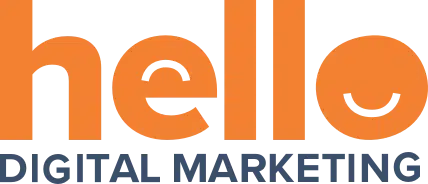


“But I do write on my blog!”
“Yes, but you need some more pages and-”
“I have an About page and three product pages, isn’t that enough?”
“Those are important, sure, but-”
“What am I supposed to add where, then?”
This conversation happens far too often. Your website’s got a lot of potential, and investing in the top level (your basic informational pages, blog, and products or services) is really important. But we can do so much better.
What should be a page, what should be a blog post?
Unless you’re pulling some really fancy business, the “page and post” pair should be your website’s bread and butter. The primary differences between these two formats come down to organizational structure and best effective content.
Note: for the sake of ease, we’re going to stick to these published formats, and ignore the huge variety of user generated content your site could contain. That’ll be covered another time.
Post vs Page organization is a big part of your information architecture.
Page organization is naturally hierarchical. You can nest one page under another to create sections, and direct visitor flow easily between multiple pages – for deep informational dives, or functional workflows like purchases. Page content is designed to be informative – a catalog of data or statements about a topic. It’s usually best to present topical overviews, and then break out information into different pages to let people read further, or jump off at any point and move to a contact or purchase workflow.
Blog post organization on the other hand tends to be chronological, with sorting tools like tags and categories adding context, rather than being the primary means of organization. Attaching any form of sorting to your posts allows people to find related information on your site – but they’ll still be reading the post itself first, then the topic page, more often than not.
Best effective content: what kind of information should these formats contain?
Put basically, the difference between blog posts and pages is the difference between the periodicals section of your content library, and the reference section.
Deep and detailed or technical information belongs on pages. If it’s;
- a feature list, as bullet points
- reviews or testimonials
- schematics drawings, drafting content, or even 3D interactive mockups
- value propositions or sales statements aimed at conversion
- forms, shopping carts, workflows of any kind
… you can bet it’ll work better on a page. Pages work best with content that has a relatively high need for attention compared to posts. They’re the go-to for less timely content, that acts as reference material, brochures, or customer support.
Blogs, on the other hand, work best for snackable content, like;
- timely information, such as industry or corporate news
- topics that can lead to discussion, like soft research (asking questions of your visitors), or tips and tricks for your products
- ongoing commentary or general support, through advice related to your industry.
Most of that, you’ll find in text. Blogs make great homes short form information, that’s either low on detail and broad on scope, or laser-focused and highly specific.
So those are the formats, what about the content?
This is a tougher question, because so much of content is about presentation. Here are some examples:
Text obviously works everywhere – it’s necessary for the web to function. However, breaking up your text, using headings and lists, and avoiding huge loafy paragraphs is very important.
Infographics are almost always found in blog posts, because they tend to tell stories. They present detailed or in-depth information as an end-product, rather than an examination in most cases.
Video is a great multipurpose tool. Most often, where a video will make sense is determined by the subject matter. A tutorial or quick how-to can work well on a blog post. A formal product demonstration makes more sense as the focus of a page. Transcripts are also important for video, to translate their information to text for accessibility.
How you aim to promote your content will also be informed by the format you choose.
Because of their nature as shareable, snackable content, blog posts usually get the most social media love.
We often think of blog posts as the only viable option for website content to be promoted via most marketing channels – tossing out a blind tweet promoting a new, three-thousand word page you just published may not always get a good response. Figuring out how to promote page content just requires a little more strategic thinking. This is where intelligent monitoring comes in.
Let’s say, as you watch your monitoring tools or conduct searches in social for mentions of your business and products, that you come across someone asking a pretty specific question. If you’ve got a page on your website that answers it in detail, you can save that person’s day by sharing it with them directly!
Promotion of content isn’t just about adding megaphones to every URL you can muster – it’s often about directing focused attention to relevant information at the point of need. Think of it like search, in reverse.
You need more content: Always Be Creating
Whether you’re using a Growth Driven Design formula for your website or not, your digital marketing still benefits from constant improvement of your content library.
Source: Hello BLOG
Recent Articles
Write For Us
Think you’ve got a fresh perspective that will challenge our readers to become better marketers? We’re always looking for authors who can deliver quality articles and blog posts. Hundreds of your peers will read your work, and you will level up in the process.Ready to grow? Say Hello









